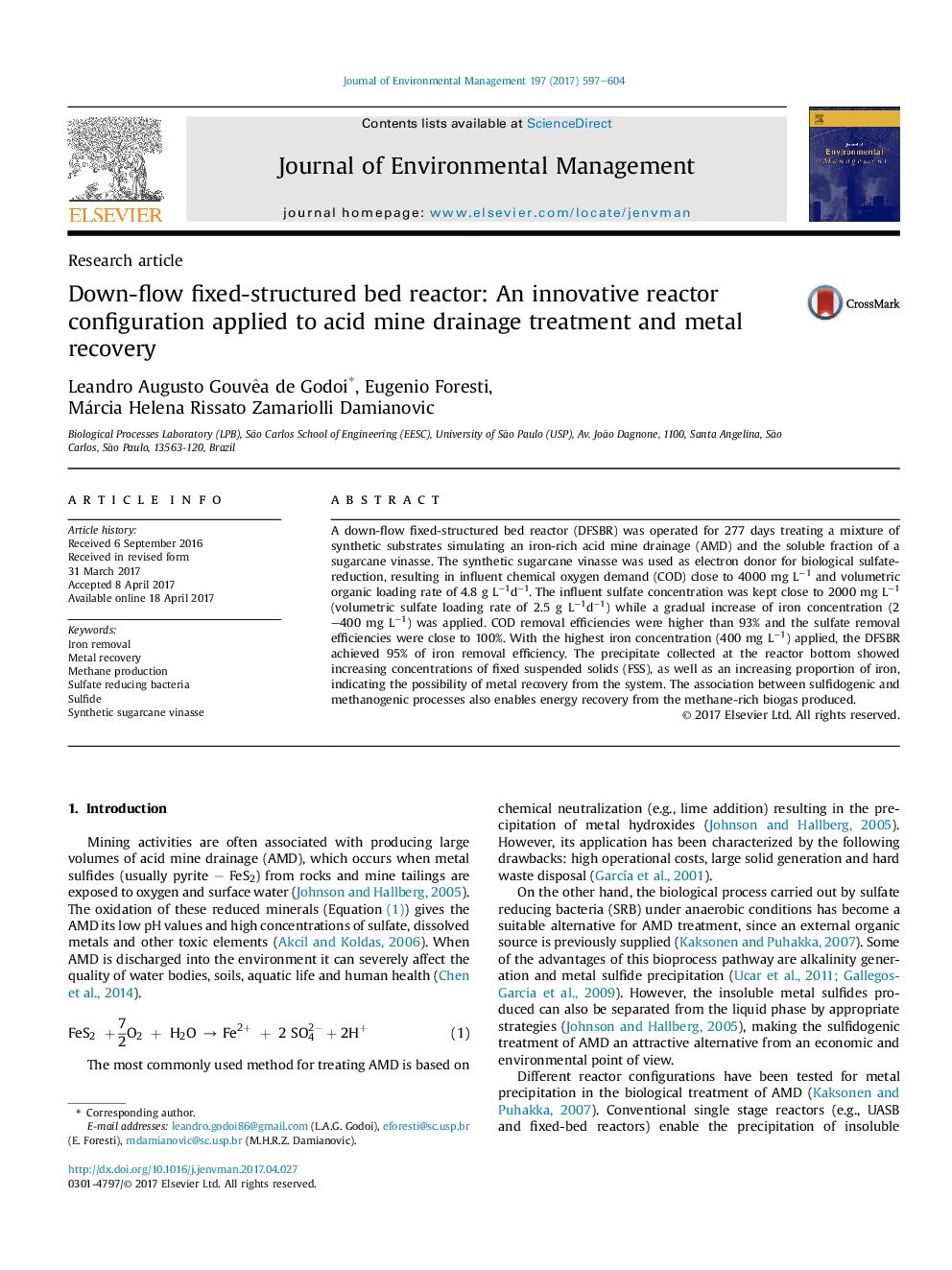| Article ID | Journal | Published Year | Pages | File Type |
|---|---|---|---|---|
| 5116983 | Journal of Environmental Management | 2017 | 8 Pages |
â¢Sulfate and iron from a synthetic acid mine drainage were efficiently removed.â¢Balanced methanogenesis and sulfidogenesis occurred at COD/SO42- ratio of 2.â¢Synthetic vinasse was feasible as electron donor for the biological sulfate reduction.â¢The alkalinity resulted from the processes promoted the reactor operating stability.â¢The DFSBR reactor proved to be a promising configuration for metal recovery.
A down-flow fixed-structured bed reactor (DFSBR) was operated for 277 days treating a mixture of synthetic substrates simulating an iron-rich acid mine drainage (AMD) and the soluble fraction of a sugarcane vinasse. The synthetic sugarcane vinasse was used as electron donor for biological sulfate-reduction, resulting in influent chemical oxygen demand (COD) close to 4000 mg Lâ1 and volumetric organic loading rate of 4.8 g Lâ1dâ1. The influent sulfate concentration was kept close to 2000 mg Lâ1 (volumetric sulfate loading rate of 2.5 g Lâ1dâ1) while a gradual increase of iron concentration (2-400 mg Lâ1) was applied. COD removal efficiencies were higher than 93% and the sulfate removal efficiencies were close to 100%. With the highest iron concentration (400 mg Lâ1) applied, the DFSBR achieved 95% of iron removal efficiency. The precipitate collected at the reactor bottom showed increasing concentrations of fixed suspended solids (FSS), as well as an increasing proportion of iron, indicating the possibility of metal recovery from the system. The association between sulfidogenic and methanogenic processes also enables energy recovery from the methane-rich biogas produced.
